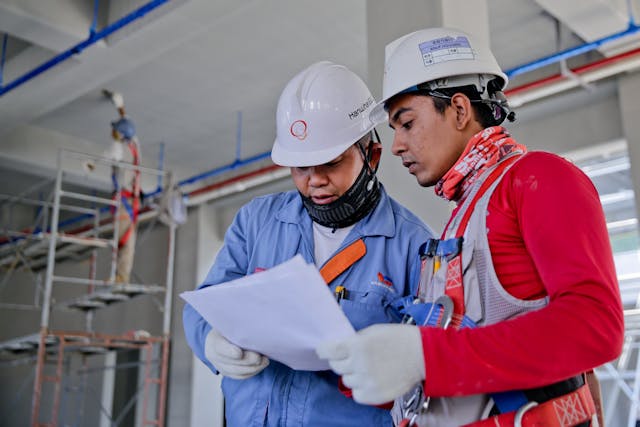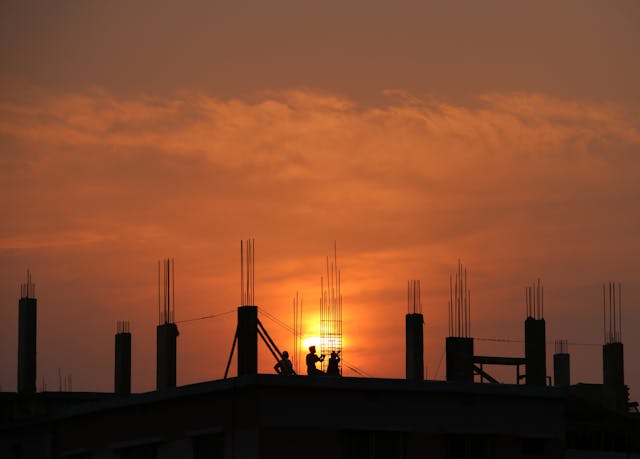
Construction Site Safety Laws: A Guide for Workers and Employers
Construction sites, by their very nature, are dynamic and potentially dangerous workplaces.
Workers face risks ranging from falls from heights to machinery malfunctions, electrocutions, and being struck by falling objects. Unfortunately, construction accidents can result in life-altering injuries or even fatalities. To reduce these risks and protect workers, comprehensive safety laws and regulations exist. These laws outline crucial safety standards for construction sites. Understanding these safety laws is essential for both workers and employers in creating a safer working environment and reducing the likelihood of tragic accidents. While these laws provide a framework, injured workers may face challenges seeking compensation. Consulting with experienced accident attorneys NY, or a qualified construction accident lawyer serving your specific area, can help you understand your rights in the event of an injury on a construction site.
Key Safety Regulations

The Occupational Safety and Health Administration (OSHA) is a federal agency tasked with setting and enforcing workplace safety standards, including within the construction industry. OSHA regulations cover a vast range of hazards commonly encountered on construction sites. Falls are the leading cause of fatalities in construction, and OSHA mandates safeguards like guardrails, safety nets, and personal fall arrest systems when working at heights. Construction sites often involve hazardous chemicals, and OSHA's "HazCom" standard requires employers to provide information and training on these hazards, including proper labeling and the use of safety data sheets (SDS). Since scaffolds are frequently used, it's crucial to adhere to OSHA's strict regulations for their design, construction, and use to prevent collapses. Similarly, OSHA requires protective systems like shoring or sloping to prevent cave-ins when creating excavations and trenches. Construction sites teem with electrical hazards like shocks and burns, and OSHA standards address safe wiring practices, lockout/tagout procedures, and the use of ground-fault circuit interrupters (GFCIs). Finally, construction involves heavy machinery and power tools, so OSHA regulations cover machine guarding, safe operation procedures, and regular maintenance to minimize risks. It's important to note that some states may have additional safety regulations beyond OSHA's federal standards. Employers and workers must familiarize themselves with all applicable regulations.
Employer Responsibilities
Ensuring safety on construction sites is primarily the employer's responsibility. This includes providing a workplace free of recognized hazards, complying with OSHA regulations, and providing necessary safety equipment like hard hats, eye protection, and harnesses. Employers are also obligated to provide comprehensive safety training to workers, covering topics like hazard identification, safe equipment operation, and emergency procedures. Crucially, employers must implement ongoing hazard assessment processes. This involves regularly inspecting the worksite, identifying potential dangers, and implementing corrective measures. Finally, having established procedures for reporting injuries, incidents, and near-misses is essential, along with thorough investigation protocols to prevent future accidents.
Worker Rights and Responsibilities
While employers bear the primary responsibility for safety, workers also play a vital role. Workers have the right to a safe workplace and the right to refuse work they deem unsafe. Additionally, workers have the right to raise safety concerns or report violations to OSHA without fear of retaliation. This protection is essential in empowering workers to speak out about unsafe conditions. They also have the right to access relevant OSHA standards, safety training materials, and records of work-related injuries and illnesses. Workers have the responsibility to follow established safety protocols, wear provided safety gear, participate in safety training, and immediately report any injuries sustained on the worksite. They should report not only injuries but also near-misses. These "close call" incidents, even if no injury occurred, provide valuable opportunities to identify and address potential hazards before they cause harm. Workers may also request an OSHA inspection if they believe serious safety hazards exist in their workplace.
What to Do After a Construction Accident

Construction accidents can have devastating consequences. It's crucial to prioritize getting prompt medical care for any injuries sustained. Even seemingly minor injuries may worsen over time. Reporting the accident to your employer is also essential, following any established procedures. Depending on the circumstances, you may be eligible for workers' compensation benefits, which cover medical expenses and a portion of lost wages. However, in cases of severe negligence, there might be grounds for a third-party lawsuit. This is where skilled legal counsel from an NYC construction accident lawyer or a construction accident lawyer in Queens, or from an experienced attorney in your area, becomes invaluable. They can advise you on your options and protect your rights.
Conclusion
Understanding construction site safety laws is a shared responsibility between workers and employers. These laws are crucial safeguards designed to prevent accidents and protect lives. By proactively addressing hazards, providing training, and having clear safety procedures, employers can foster a safer working environment. Workers play a vital role by following the rules, using safety equipment, and reporting any concerns. When accidents do occur, knowing how to respond and understanding legal resources is key to ensuring that injured workers receive the support and compensation they deserve.
Trending
-
1 Jocko Willink's Inspirational Life & Net Worth
Aaqil Ashraf -
2 How Art Shapes Culture and Reflects Human Experience
Luke Fitzpatrick -
3 Meet Felix Williams and Maria Arthuer: The Parents of World Class Winger Nico Williams
Felix Yim -
4 Kai Cenat's Dad and the Enduring Public Interest
Aaqil Ashraf -
5 London Tube Stations Closed as Workers Stage Strikes
Mihir Gadhvi





Comments